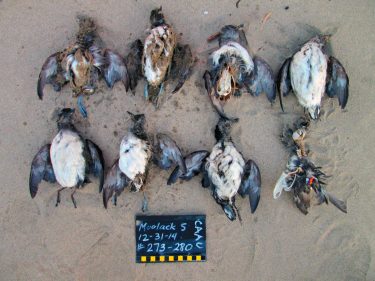
In the fall of 2014, West Coast residents witnessed a strange, unprecedented ecological event. Tens of thousands of small seabird carcasses washed ashore on beaches from California to British Columbia, in what would become one of the largest bird die-offs ever recorded.
A network of more than 800 citizen scientists responded as the birds, called Cassin’s auklets, turned up dead in droves along the coast. Beach walkers and local residents recorded the location and date of carcasses as they found them, entering the information into a real-time database that helped state, tribal and federal wildlife experts track the mass mortality event as it unfolded.
The efforts of these place-based data collectors — along with data on temperature, ocean circulation and the abundance of prey — have provided the first definitive answer to what killed the seabirds: starvation brought on by shifts in ocean conditions linked to a changing climate. An international team of about 20 researchers from federal, state and provincial agencies, universities and wildlife organizations published their conclusions in the April 16 edition of Geophysical Research Letters.
“This paper is super important for the scientific community because it nails the causality of a major die-off, which is rare,” said senior author Julia Parrish, professor in the University of Washington’s School of Aquatic and Fishery Sciences and executive director of the Coastal Observation and Seabird Survey Team (COASST), one of the citizen science groups that counted the carcasses.
Read more at UW Today »
